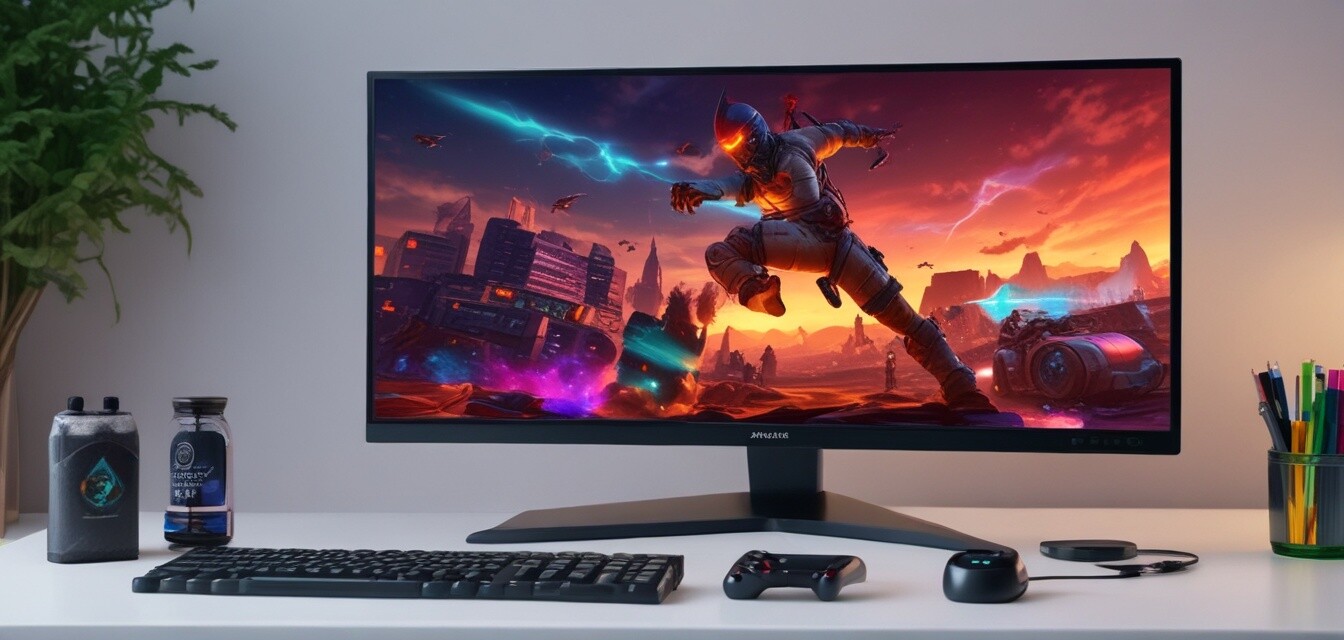
The Ultimate Guide to Gaming Monitor Specifications
Key Takeaways
- Understand key specifications such as refresh rates, response times, and resolutions.
- Know how panel types affect your gaming experience.
- Discover the importance of adaptive sync technologies.
- Learn how to choose the right monitor for your gaming needs.
When it comes to gaming, having the right monitor can significantly improve your experience. With various specifications available, it can be overwhelming to choose the perfect one. This guide will explore the key specifications of gaming monitors, helping you understand what to look for when choosing a monitor that fits your gaming style.
What to look for in a gaming monitor
1. Refresh Rate
The refresh rate is measured in hertz (Hz) and indicates how many frames per second (fps) a monitor can display. For gaming, a higher refresh rate is generally better.
| Refresh Rate (Hz) | Advantages | Common Usage |
|---|---|---|
| 60 Hz | Good for casual gaming | Basic gaming, daily use |
| 144 Hz | Smooth gaming experience | Competitive gaming |
| 240 Hz | Best for professional gamers | High-level competitions |
2. Response Time
Response time is the speed at which a pixel can change from one color to another, measured in milliseconds (ms). A lower response time can reduce motion blur and ghosting effects in fast-paced games.
| Response Time (ms) | Impact on Gaming |
|---|---|
| 1 ms | Ideal for competitive gaming |
| 5 ms | Generally acceptable for casual gaming |
| 10 ms+ | May result in noticeable motion blur |
3. Resolution
Resolution defines the number of pixels displayed on the screen. Higher resolution monitors offer sharper and clearer images. Popular resolutions include:
- 1920 x 1080 (Full HD)
- 2560 x 1440 (Quad HD)
- 3840 x 2160 (4K Ultra HD)
Panel Types
Different panel technologies offer various advantages and disadvantages. Here’s a brief overview:
- IPS (In-Plane Switching): Known for excellent color accuracy and viewing angles, making them ideal for creative work and gaming.
- TN (Twisted Nematic): Generally offer faster response times but poorer color reproduction and viewing angles.
- VA (Vertical Alignment): Provide good contrast ratios and decent color reproduction, making them a good all-round option.
Adaptive Sync Technologies
Adaptive sync technologies help eliminate screen tearing and stuttering by synchronizing the monitor's refresh rate with the graphic card's frame rate. Two popular technologies are:
- G-Sync: Developed by NVIDIA, caters to their graphics cards.
- FreeSync: Developed by AMD and often more budget-friendly.
How to choose the right gaming monitor
Follow these steps to select the best gaming monitor for your needs:
- Define your primary usage: gaming, multimedia, or professional work.
- Determine your budget and desired specifications.
- Read product reviews to compare features and performance.
- Consider your gaming setup space and monitor size preferences.
- Check for compatibility with adaptive sync technologies if pertinent.
Conclusion
Selecting the right gaming monitor involves understanding various specifications that cater to your gaming needs. By focusing on refresh rates, response times, resolutions, and panel types, you can find the perfect monitor to enhance your gameplay. For further insights, check out our Buying Guides, where we explore the best gaming gear available today!
Pros
- Improved gaming experience with higher refresh rates.
- Reduced motion blur with lower response times.
- Better image clarity with higher resolutions.
- Enhanced color accuracy with certain panel types.
Cons
- Higher specifications often come with an increased cost.
- Compatibility issues may arise with certain technologies.
- Some panels may have limited viewing angles.
Further Reading
If you're looking to upgrade your gaming setup, check out our guides on gaming monitors, gaming keyboards, and gaming mice.
